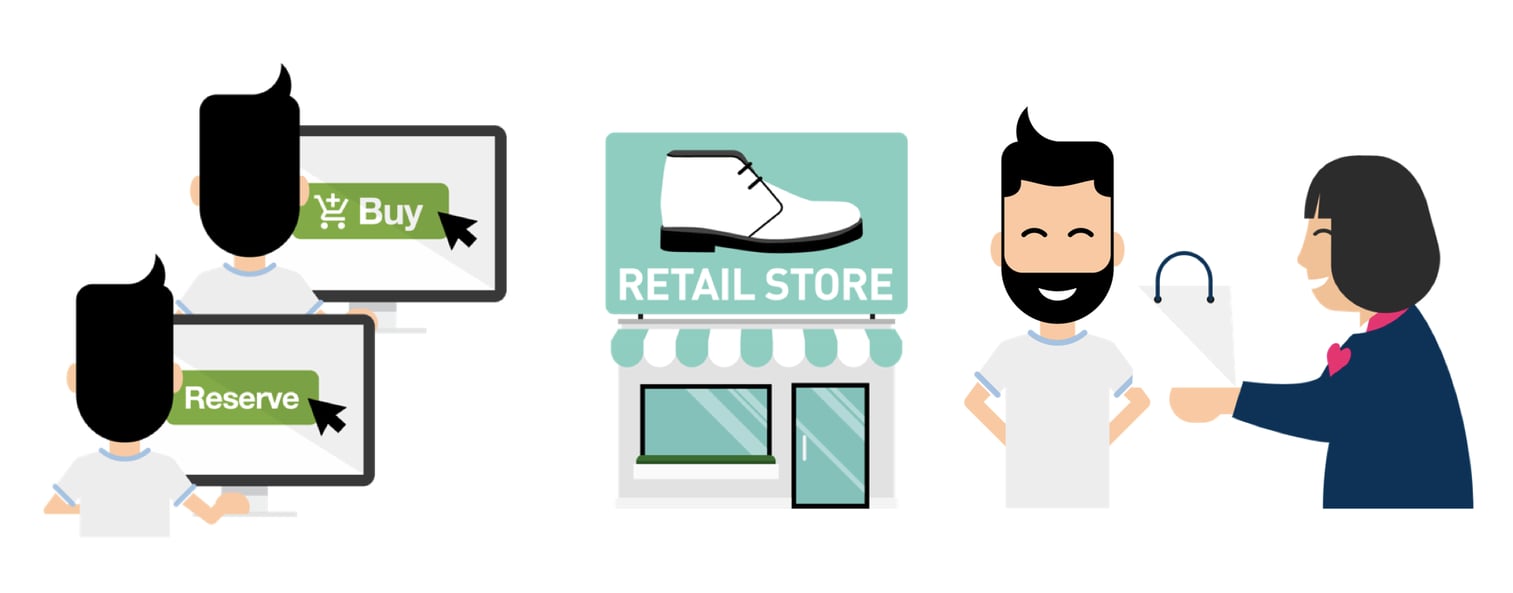- Uncategorized
OmniChannel Series – Implementing Buy Online Pickup In-Store (BOPIS)/Click & Collect

We are now in an era of a truly connected world, where consumers expect more and more from the brands and retailers. They are expecting a seamless experience across channels, demand convenience and flexibility, expect knowledgeable store associates, and more…
Consumers are getting used to researching online before purchase. While many are purchasing online and getting the orders delivered, the majority still like to go to the stores to try or experience the products first and then picking them up right away. It would be a big disappointment if a customer found what they like online, and found the products out-of-stock when they come to the store. This can happen frequently for retailers who carry a limited inventory per store, such as apparel retailers with many sizes and colors, multi-brand retailers with lots of SKUs or brands who carry highly exclusive lines.
One way to avoid such disappointment and improve customer experience, is to provide inventory visibility online, and to let customers Buy Online and Pickup In-Store (BOPIS), also called Click and Collect.
Key Considerations when Implementing BOPIS / Click and Collect
Implementing Click & Collect can be tedious on a operational level. Here are some main questions to ask:
1. What would be the end-to-end customer experience, from purchasing through the website to collecting in-store?
2. What would be the operation model? Should we use the store inventory, or ship to store from an eCommerce warehouse?
3. How would this impact the store operations, and what would the store associate need to do to fulfil such orders?
4. How do we handle situations such as product exchange and refund in-store?
5. How do we integrate with existing systems such as POS and ERP?
End-to-End Customer Experience
To create a frictionless experience, transparency and communications are critical. Consumers desire control, including when and how to get the products they want. For some customers, they want to get the product asap, and have no problem coming to the store. In other cases, timing is slightly less important but they want to pickup at a store that is convenient to them.
Many Click & Collect implementation only ships the orders from the eCommerce warehouse to store, which typically takes at least a day or two, even though the pickup store may have the items in stock. This creates unnecessary waiting time for the customers and is far from ideal. Inventory visibility and pickup timing indication, together with the use of stock at store for fulfilment, can better inform customers and facilitate their decision. If certain stores have stock and allow faster pickup, or if the desired pickup store doesn’t have stock and needs a few more days for the transfer, customers would know and act accordingly.
Here is the typical consumer journey for Click & Collect:
1. Customer checks out the products at the product detail page, with clear indication of real-time inventory at each pickup store
2. Customer purchases the items and select the desired pickup store with clear indication of expected pickup time
3. Customer receives order confirmation message once the order is placed
4. Once the item is ready-to-pick, the customer would receive an message with pickup instruction (such as a QR code for showing to store associate)
5. At store, customer would show the QR code to the store associate, receive the product and sign off the order
6. In the case that the customer is not satisfied with the order, exchange and refund can be made on the spot in-store (Buy Online Return In-Store or BORIS).
Inventory Allocation
The simplest form of Click & Collect implementation is to Ship-to-Store from the eCommerce warehouse. While the implementation is a lot simpler, it creates inefficiency in the use of the inventory, unnecessary logistic cost, and poorer customer experience with the unnecessary wait time.
The ability to leverage the stock at store is important to the success of Click & Collect. The online system needs to be aware of the inventory of the stores and not just the online warehouse, and since the stores are actively selling the same inventory as well, realtime (or near realtime) inventory integration together with a safety threshold would be necessary. Order routing rules to determine the best way to fulfil the order based on stock availability is also needed.
Store Operations
One key component to the success of Click & Collect is the tweaking of store operations procedures, as the store associates now have to be aware of the online orders, handle the fulfilment and take advantage of the customer visit for cross selling opportunities.
To accomplish the store operations, the store associates would need a mobile tool that allows them to get notified of the online orders, handles pick and pack, updates order status for ready-to-pick and customer collection, exchanges and refunds during store visit, and provides clienteling functionality.
Technology and Integration
Implementing Click & Collect, together with broader Omni-Channel Customer Experience, would require an Omni-Channel focused solution such as CLEARomni, that handles the integration with your website (whether you are using technologies such as Magento, Salesforce Commerce Cloud, Shopify Plus, BigCommerce, etc), your existing ERP and POS, providing critical functionality for inventory allocation, order routing, mobile fulfilment and Clienteling tool, etc.
Visit our CLEARomni site for more information on our CLEARomni OMS and In-Store capability. Talk to us on how we can help you implement Click & Collect / BOPIS for your business.
